I’ve long been fascinated by the idea of homemade yogurt, even if instinct would have you believe that an advanced knowledge of dairy science would be required for such a project. “Live and active cultures” — the hallmark of yogurt’s tang and the key to its gut healthfulness — would seem to necessitate at least a petri dish, right? That’s not so much the case. Yogurt is essentially the dairy version of sourdough bread, where a basic starter in the form of already-made yogurt can beget even more yogurt.
Read more: 12 Best Probiotic Foods to Eat for Gut Health
What’s more, you don’t even need special equipment for this. If you’re serious, you can buy a yogurt maker, and some bread machines may even have a yogurt setting, (again, yogurt = sourdough) but you don’t need anything more than your basic slow cooker to accomplish this. Conventional yogurt and milk are the only necessary ingredients, and besides the slow cooker itself, a food thermometer will be required to achieve certain key temperatures, but that’s it. Here’s a breakdown of everything you may need to know to start your yogurt laboratory at home.
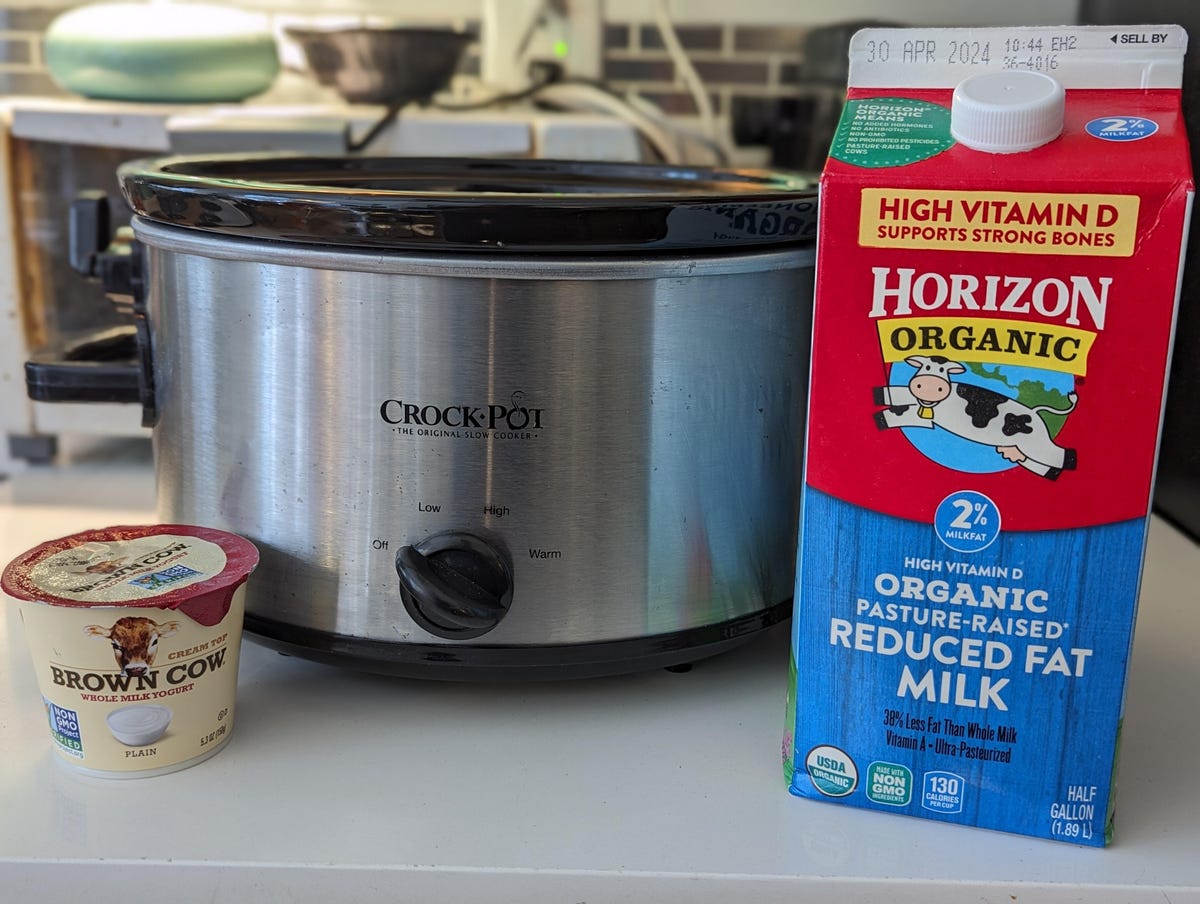
Everything you need to make yogurt in a slow cooker.
How do you make yogurt in the slow cooker?
The steps of homemade yogurt are simple but time-consuming, so either be prepared to begin your yogurt experiment first thing in the morning, or begin in the early evening to finish the yogurt overnight.
What you need to make slow cooker yogurt:
- Slow cooker (I used this $40 Crock-Pot model)
- Probe thermometer
- ½ cup plain yogurt with live and active cultures
- A half gallon of milk: you can customize it to your liking, but I used organic, 2%, pasture-raised
Begin by pouring the milk into the slow cooker and heating it on high until the milk reaches 180 degrees F. I poked around for the reason behind this step, and the short answer is that this is the magic number to alter the protein structure of the milk for optimum yogurt viscosity. (No further dairy science is required, I promise.) This step took just over 2 hours in my slow cooker.
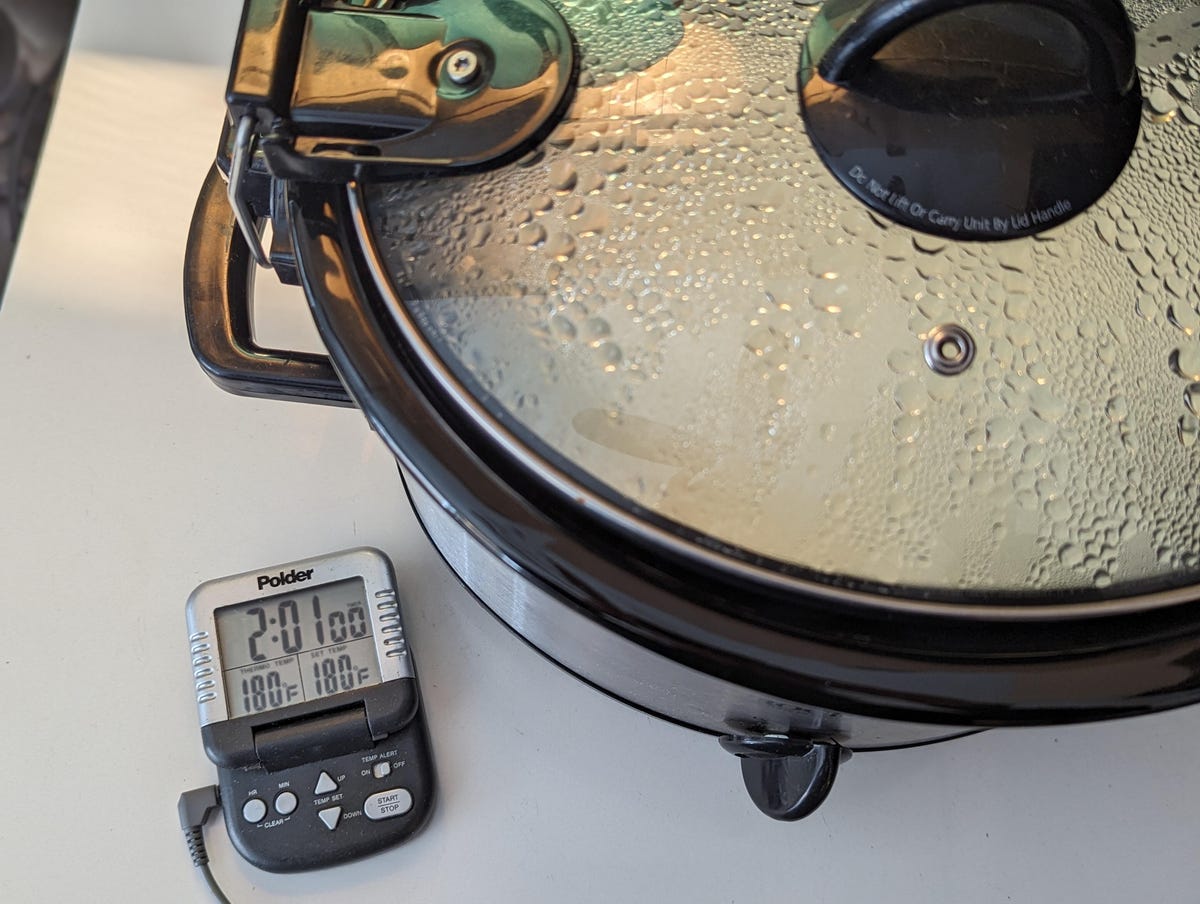
Milke
After the milk reaches 180 degrees, turn the slow cooker off, and allow the milk to cool to just below 120 degrees. This also took about 2 hours. The optimum temperature for the live and active cultures to do their thing is between 110 and 120 degrees F.
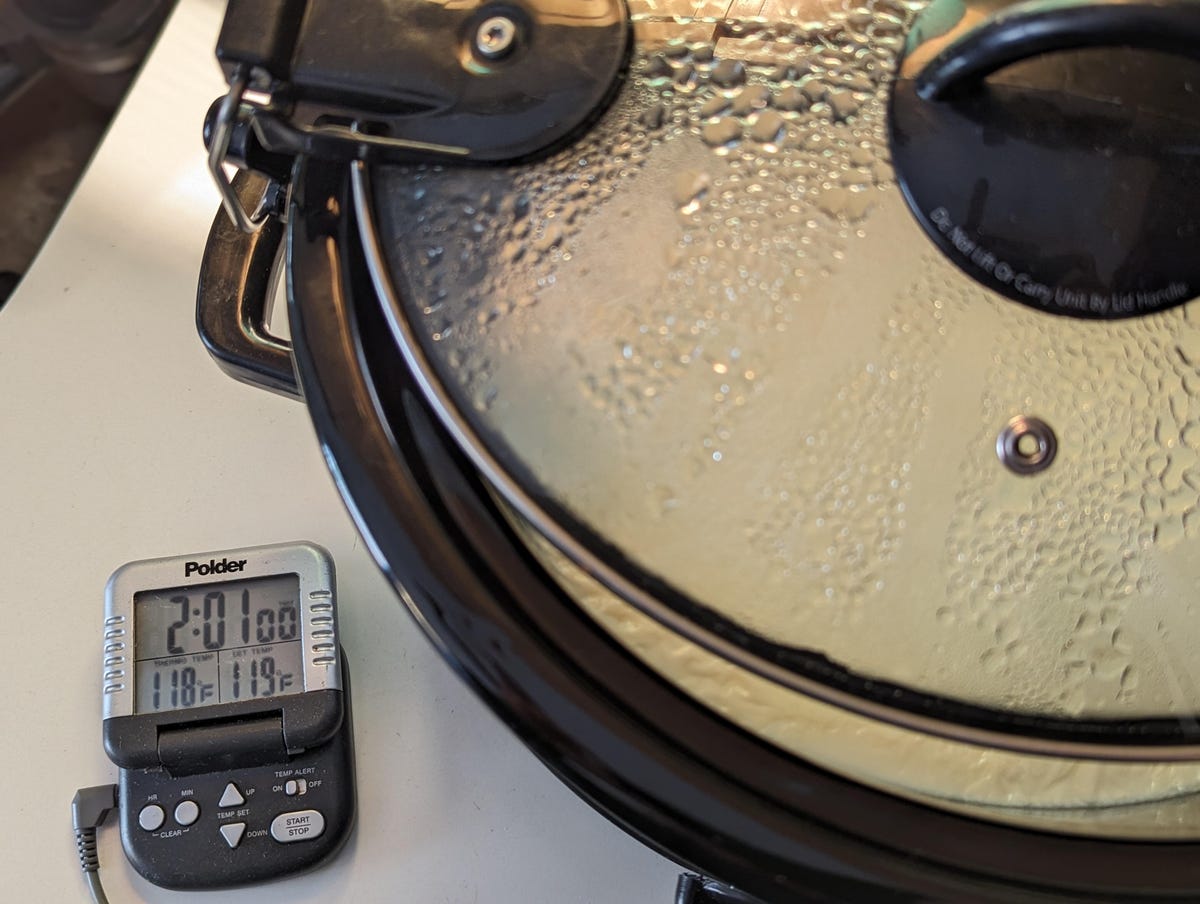
And down to 118 degrees F.
Carefully stir in ½ cup of yogurt into the warm milk. Note: You do not turn the slow cooker back on at this point, or ever again. The ambient warmth from the original heating of the milk is all that is required for the transformation to take place, where the already-made yogurt infuses the milk with the necessary cultures.
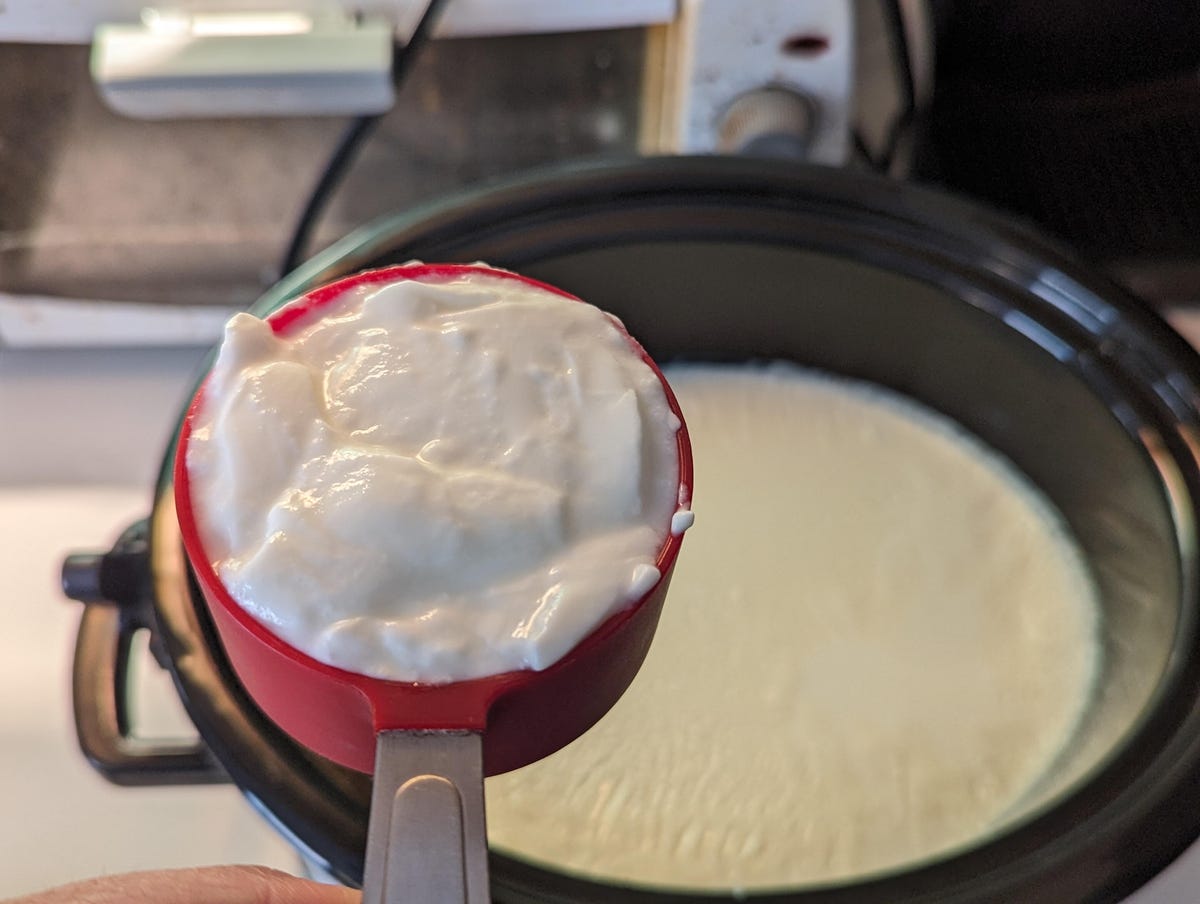
The yogurt is now ready to add to the milk.
Replace the lid on the slow cooker, and cover it with a towel to keep the environment dark. (Apparently, live and active cultures do like to keep a bit of mystery about themselves, so you can’t watch them do their thing. Rightly so.) Then wait 8 to 12 hours for the mixture to ferment and thicken. You can place the slow cooker in the refrigerator after 6 hours, which I did since I got started later than I now know I should have, and it was time to go to bed.
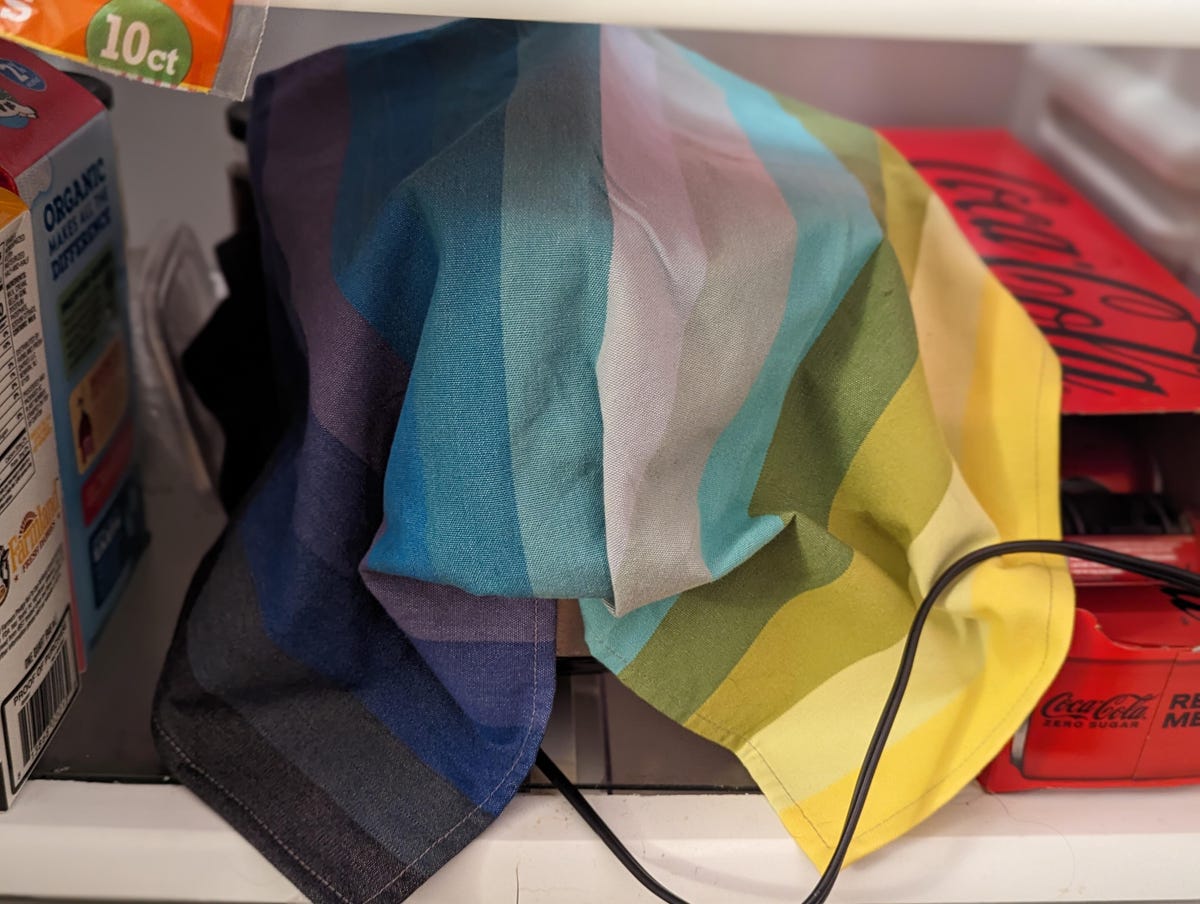
Goodnight, yogurt.
How did the slow cooker yogurt turn out?
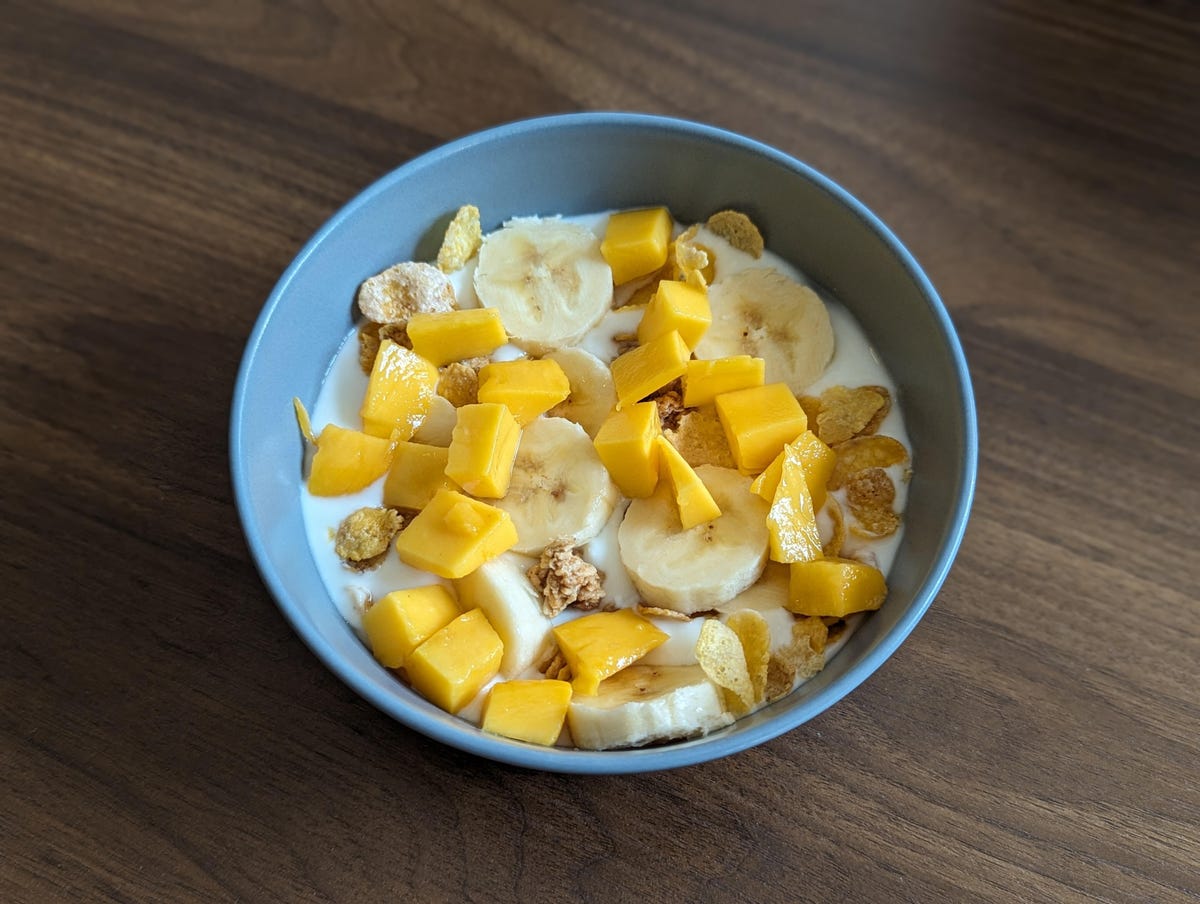
Breakfast!
So, how did it all work out? Honestly? Better than I expected. The yogurt was creamy, tangy, and slightly more fluid than you might expect from the grocery store, but to me, this more closely resembles European-style yogurt, which I happen to like. If you want Greek-style yogurt, it will require an additional step involving cheesecloth and another 8 hours or so, and you’ll get a smaller yield.
The fluid type of yogurt this does make is well worth your time: it’s perfect for drizzling over granola or fruit salad, using as the basis for a creamy salad dressing and dip or freezing into portions to use for smoothies. If you happen to have an ice cream maker, this yogurt is already the perfect consistency for churning up some frozen yogurt.
The half gallon of milk made basically a half gallon, or two quarts, of yogurt, so freezing some may be necessary depending on your yogurt consumption pace. There’s a slight bit of whey to drain off from the top of the batch, but this is exactly like the watery substance that appears on top of your grocery store yogurt as well, and it amounted to less than I was expecting.
Are there any drawbacks to making yogurt in the slow cooker?
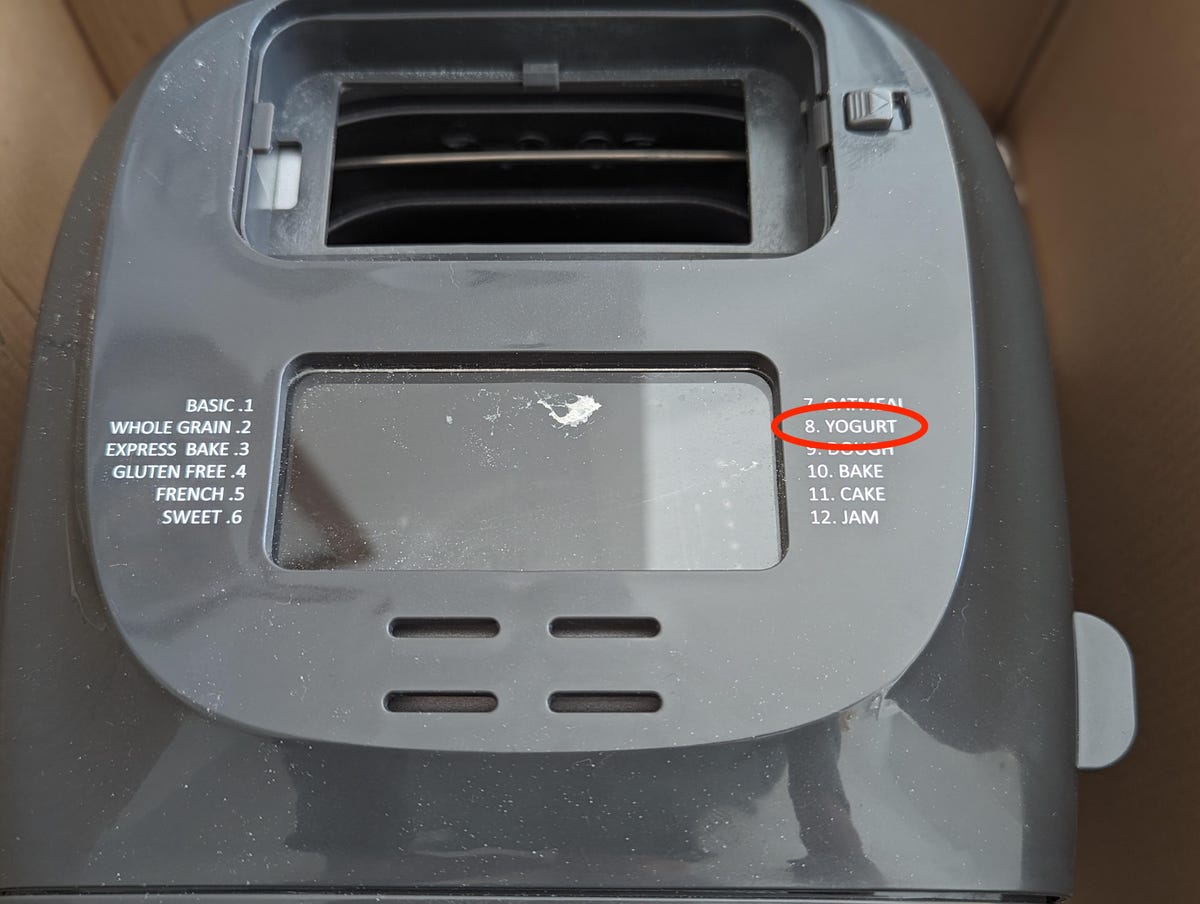
Even bread machines are getting in on the yogurt game.
Because of the heating and cooling steps involved with the milk, it’s not like making dinner in the slow cooker where you can just set it and forget it. I was admittedly impatient for those steps to take place, which took longer than I anticipated, but now that I have a first-hand understanding of the timing involved, I’ll be able to not have to watch those steps so closely or wonder how long they’ll take.
I had specifically wanted to make yogurt in the slow cooker since that’s a popular device even the occasional home cook is likely to have. Since my bread machine has a yogurt setting that promises finished yogurt in 8 hours by automating the required temperatures, I’ll probably give that a try next time.
Can you save money by making yogurt in the slow cooker?
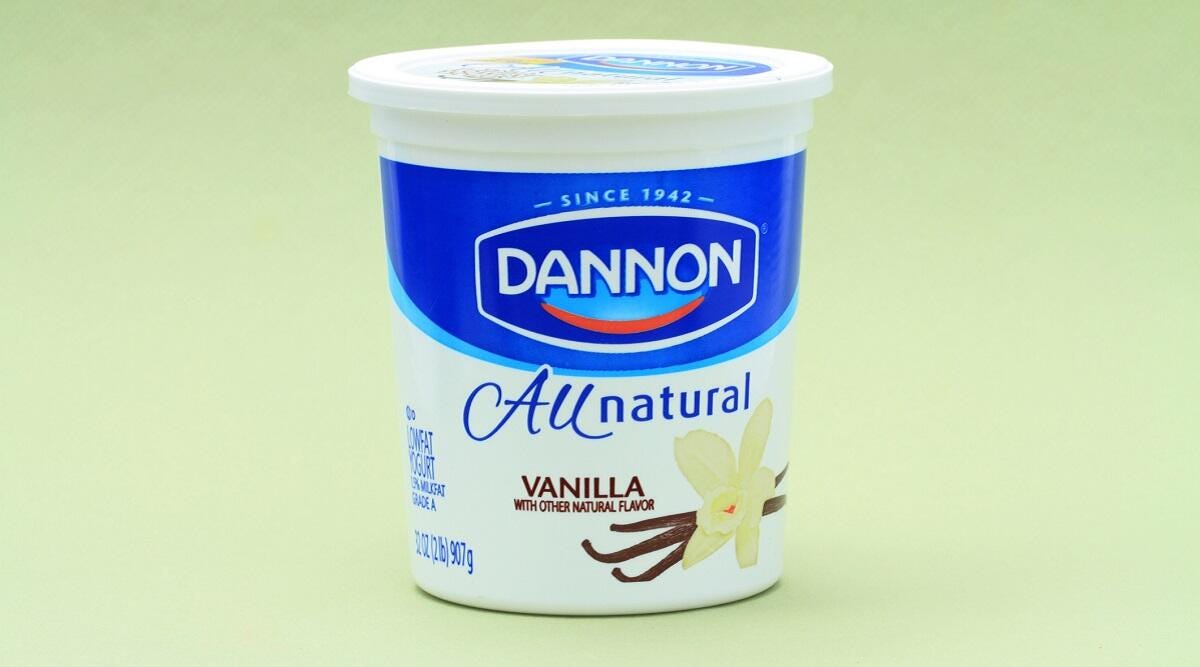
Making yogurt at home in large batches will save you money over storebought.
In short, yes. The half gallon of organic milk I bought at about $6 is about what I’d expect to pay for a quart of good quality, plain yogurt. Since the recipe amounts to about two quarts of yogurt, you get twice as much for the same price, rendering it half the cost to do it yourself. Plus, you can use your homemade yogurt as the starter culture for your next batch of homemade yogurt, so you save yourself those $2 or so on subsequent batches as well.
Depending on your yogurt consumption, this may or may not amount to significant savings in a year, but savings are savings, and homemade yogurt is cool.




















+ There are no comments
Add yours